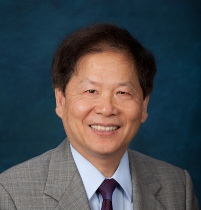Invited Speaker

Prof. Peixuan Guo
Fellow of the National Academy of InventorsSylvan Frank Endowed Chair in Pharmaceutics and Drug Delivery,
College of Pharmacy and College of Medicine
Comprehensive Cancer Center
Director of Center for RNA Nanobiotechnology and Nanomedicine,
The Ohio State University, USA
Speech Title: Structure and function of a revolving asymmetric hexameric ATPase for dsDNA genome packaging, RNA nanotech, single-pore sensing, drug delivery, and cancer mRNA vaccines
Abstract: Human, viruses, bacteria bacteriophages, and Holliday junctions use asymmetrical hexameric revolving biomotors to translocate their dsDNA genome without rotation, avoiding coiling and tangling. Rotation is an object turning around its axis, similar to the Earth rotating 24 hours per day. Revolution is the orbital turning around another object, similar to the Earth revolving around the Sun. Extensive fundamental studies on the RNA-geared phi29 DNA packaging motor have led to the development of four novel applications using the motor component as nano-biomaterials: (1) the hand-in-hand interaction of the hexametric motor pRNA led to the emergence of RNA nanotechnology; (2) precision motor channels as nanopore for single molecule sensing; (3) the sequential revolving motor with homo-multi-subunits inspires the discovery of highly potent drugs; and (4) discovery of the asymmetrical hexameric motor for the translocation of dsDNA genome of viruses, bacteria, and eukaryotes for new drug targets.
Human genome sequencing has revealed that the majority of non-protein-coding DNA encodes for non-coding RNAs, marking a paradigm shift that could indicate RNA therapeutics as the third milestone in pharmaceutical drug development. We have constructed a variety of RNA nanoparticles with defined shape, size, and stoichiometry that have been developed for diverse applications in nanotech. RNA is controllable in shape and stoichiometry, spontaneously self-assembled, inherently motile, and deformable, allowing for both spontaneous and specific cancer targeting without detectable toxicity. Arrow-tail RNA nanoparticles allow for targeted drug delivery to cancer cell cytosols via exosome surface display.
The phi29 biomotor includes a nano-channel with a voltage-controlled shutter to regulate channel size and motion direction, serving as a durable nano-electric, biomimetic rectifier nano-aperture. This channel has been manipulated to sense single DNA, RNA, and peptides with sensitivity in discriminating signal molecules with a change of a single chemical group.
Biography: Dr. Guo, a fellow of the National Academy of Inventors and a pioneer of RNA nanotechnology and held three endowed chair positions at three different prestigious universities, is currently Endowed Chair professor OSU, and the President of ISRNN. He received his Ph.D. from UM under Dwight Anderson and postdoctoral training at NIH/NIAID under Bernard Moss. He has been a Young Distinguish Faculty Scholar of Purdue where he was a director of NIH Nanomedicine Development Center. He, with Bernard Moss invented a novel method for the production of the vaccinia virus mRNA capping enzyme that is used currently as an essential component for the production of COVID-19 mRNA vaccine. He Guo has received many honors; including the most recent “Innovator of the Year” by OSU in 2021, the Induction as NAI fellow in 2023 and the OSU President Research Excellent Catalyst Award in 2024.
